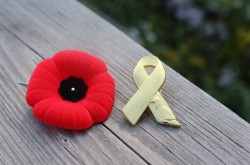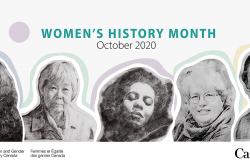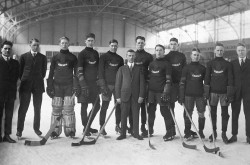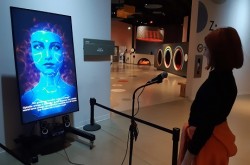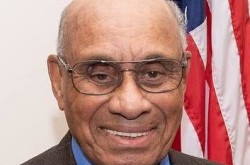Toothy tales: 5 artifacts from your dental nightmares

If a trip to the dentist fills you with dread, imagine what dentistry was like 100 years ago! Without the modern conveniences of localized freezing and sedation, many procedures would have been much more painful for the patient. In honour of Halloween, the Ingenium Channel offers up an array of dentistry artifacts that are part of the national science and technology collection. Now, open wide!

Case dental chair
If you’ve watched too many horror movies lately, this chair might conjure up images of a torture chamber…with an empty chair ready for its next victim!
In reality, this is an example of an early dentist’s chair; this particular chair was manufactured in Toronto by the Harvard Chair Co., circa 1890–1910. In fact, it even boasts some details that would have been considered quite luxurious for the time — including velvet fabric upholstery and ornate stenciling, featuring trailing leaf patterns in green and gold.

Wax model
These yellowed teeth look like they might come to life…and fly chattering across the table to bite someone.
In reality, this harmless wax model was among a group of 27 dental artifacts donated to the Canadian Museum of Science and Technology in 1984. The group of artifacts — which were donated by Dr. M.J. Hamilton of Ottawa — also included a denture liner kit, an excavator, a dental waste receiver, and other objects commonly found at a dental practice.
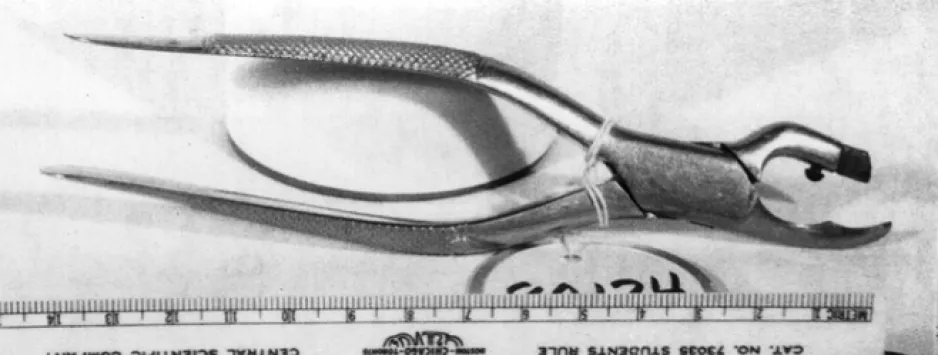
Bone cutter
Imagining this steel tool in action is definitely the stuff of nightmares!
In truth, bone cutters were a critical tool in early surgical procedures, starting in the mid-1800s and into the twentieth century. Manufactured in the U.S. by the S.S. White Dental Manufacturing Company, this surgical tool was used to cut bone, cartilage, and other tough tissues. A Philadelphia dentist, Samuel Stockton White (1822-1879) eventually abandoned his practice for the manufacture of teeth, dental instruments, and supplies. By the mid-nineteenth century, the S.S. White Company had become the largest manufacturer of dental instruments in the world.
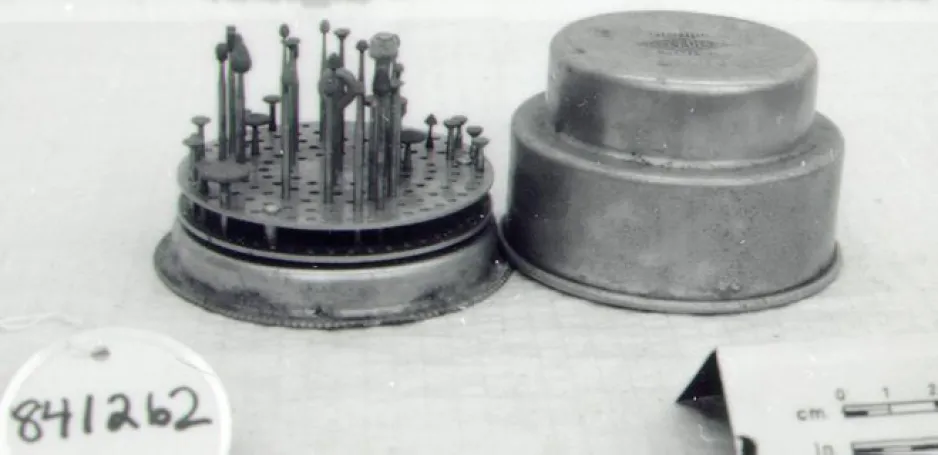
Bur set
Watching a dentist lift the lid off of this primitive-looking bur set would be a cringe-worthy moment!
In reality, dental burs are still used today — in conjunction with the dentist’s drill for cutting away hard tissue, such as tooth and bone. In this historical set, made by the Cleveland Dental Mfg. Co., the burs were actually made of abrasive stone with metal shafts. Today, burs are typically made of steel, carbide, or even diamonds — which is the hardest material available.

Anaesthesia machine
This sinister-looking mask and tank definitely gives off torture chamber vibes.
In truth, this early anaesthesia machine was a huge leap forward in preventing discomfort to the dental patient. Manufactured by the McKesson Appliance Co. in Toledo, Ohio, circa 1930, the machine was used to administer a general anesthetic to patients undergoing oral surgery. General anesthetics used in dentistry are usually administered by inhalation, with nitrous oxide gas being one of the most commonly used anesthetics. An adequate supply of oxygen must be administered alongside the nitrous oxide; this machine provided both simultaneously.
Dentists Horace Wells and William T.G. Morton were the first to discover the miracle of anesthesia for painless surgery — by administering nitrous oxide and diethyl ether. In The History of the Specialty of Dental Anesthesiology, Joel M. Weaver writes:
“Fortunately for the good of mankind, Dr Morton administered it for a patient of the chief of surgery at Massachusetts General Hospital, John Collins Warren, MD, who was a dean at the Harvard Medical School and a primary founder of the New England Journal of Medicine and Surgery. Dr Warren was absolutely amazed that Dr Morton kept his patient quietly asleep during the operation instead of having to listen to the painful screaming that always accompanied all surgery at that time. It was reported that he famously said of Morton's demonstration, ‘Gentlemen, this is no humbug.’”
Enjoying the Ingenium Channel? Help us improve your experience with a short survey!

























